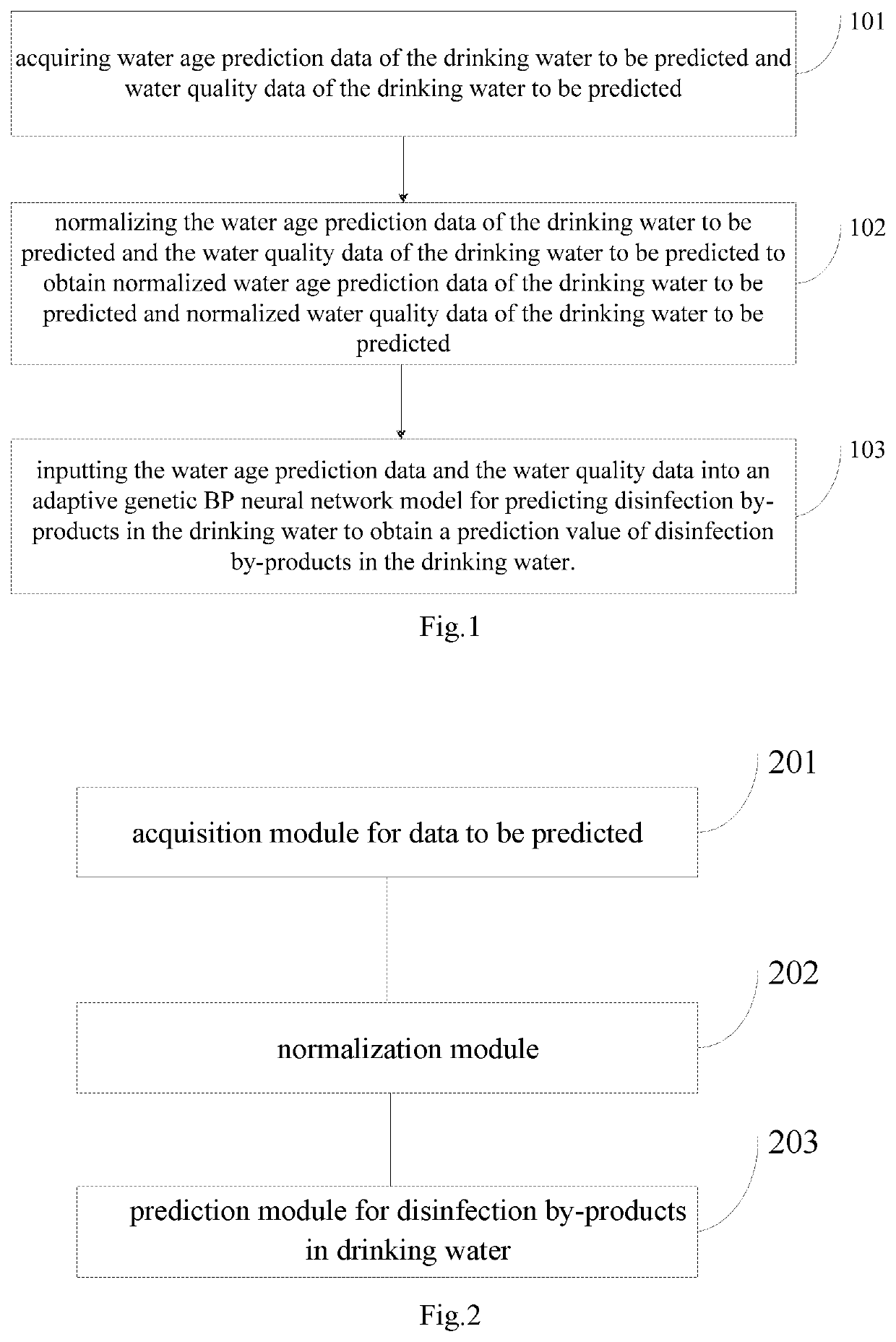Method and system for predicting disinfection by-products in drinking water
- Summary
- Abstract
- Description
- Claims
- Application Information
AI Technical Summary
Benefits of technology
Problems solved by technology
Method used
Image
Examples
embodiment
[0051]FIG. 1 is a flow chart of a method for predicting disinfection by-products in drinking water in an embodiment of the present disclosure. As shown in FIG. 1, a method for predicting disinfection by-products in drinking water includes steps 101-103 as follows.
[0052]Step 101: water age prediction data (Ti) of the drinking water to be predicted and water quality data of the drinking water to be predicted are acquired. The water quality data includes: residual chlorine (Cl2), turbidity (NTU), potential of hydrogen (PH), ammonia nitrogen (NH3—N), nitrate nitrogen (NO3−—N), nitrite nitrogen (NO2−—N), total organic carbon (TOC), ultraviolet absorbance (UV254), fluoride ion (F−), and total iron (Fe).
[0053]A specific method for generating the water age prediction data includes: acquiring water supply pipe network parameters including a pipe section length, a pipe diameter dimension, a pipe section flow velocity boundary condition, a flow rate of a node between pipe sections and a water ...
PUM
 Login to View More
Login to View More Abstract
Description
Claims
Application Information
 Login to View More
Login to View More - R&D
- Intellectual Property
- Life Sciences
- Materials
- Tech Scout
- Unparalleled Data Quality
- Higher Quality Content
- 60% Fewer Hallucinations
Browse by: Latest US Patents, China's latest patents, Technical Efficacy Thesaurus, Application Domain, Technology Topic, Popular Technical Reports.
© 2025 PatSnap. All rights reserved.Legal|Privacy policy|Modern Slavery Act Transparency Statement|Sitemap|About US| Contact US: help@patsnap.com

